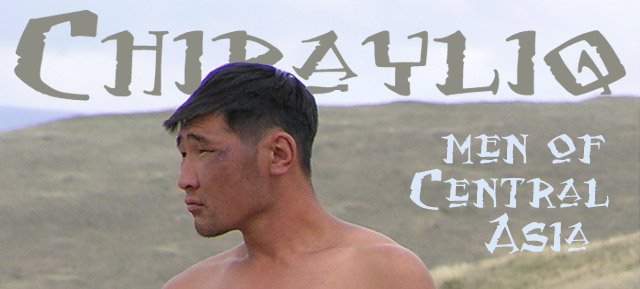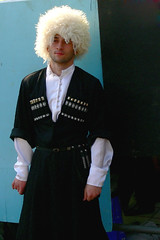
All photos in this post are by me, taken at Otgontenger mountain, Mongolia, in the summer of 2006. Click to enlarge.
These monks, other guys, and horses are not really related to the following text ...
Looking through discussion forums in search of Chirayliq material, I came across a thread discussing sex in nomadic Central Asian cultures. It was mostly a guy from Ulan Bator, nicknamed Bor Chono, writing in that thread, and he had some fascinating things to say:
"Surely Nomadic ppl have many children but it doesn`t mean that they have sex a lot. ;)
I guess Europians think that Nomads(=men) are monsters of sex -I mean "nomadic" barbarian men love women a lot.-who doesn`t? ;D
I can claim that nomads never had problem with erection. (Mongol)Old ppl claim that men who rides a horse will never have thingy problems. They say shaking your balls up & down is good for your thingy health. Riding a horse naked will increase your 'Hii-mori'='spiritual horse' & it`s also helpful for women.
But presently Mongols became sedentary so they face problems which sedentary ppl faced long before. So it seems like Mongols have almost no traditional knowledge about how to make thingy-standing. Surely Buddist monks have medecine to help men(=knowledge comes from India, Tibet & China). ::)
btw I don`t have such problems! ;D
...
Hii-mori is not a god to worship. Hii-mori is one of your Spirits -That`s inside U. It`s something like Men`s Energy-Level. If your thingy is not standing when it`s needed -Mongols likely to say 'Chalha muu'='bad tone' or 'Hii-mori doroi' means 'low spirit'='low spritual horse'.
Some mountain have a worship place where U can increase your Hii-mori. Riding a horse can increase 'Hii-mori' ;D"
Some more Mongolian men from Otgontenger mountain, also not ... really ... related to this text ... maybe:

These cowboy-like hats are popular, and cute!

A guy who is more into modern fashion.

























